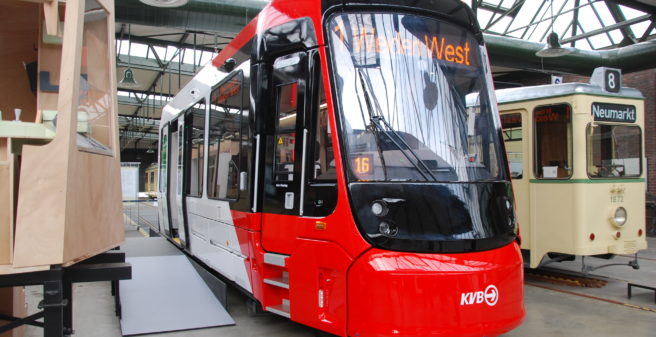
Thielenbruch Tram Museum in Cologne, 27 July: the Cologne Transport Authority (KVB) presents the mock-up (on a scale of 1:1) of its new low-floor trams, which will go into service from 2024 mainly on the lines of the east-west network in the city. The contract has been awarded to a consortium of Alstom Deutschland GmbH, Salzgitter, and Kiepe Electric GmbH, Düsseldorf, after a Europe-wide tender. The final assembly of the trams will take in Alstom’s factory in Barcelona – as was heard during the event.
Four first prototypes are to be delivered to Cologne from July to October 2024. They are to be thoroughly tested for one year. The series vehicles are then scheduled to arrive from July 2025.
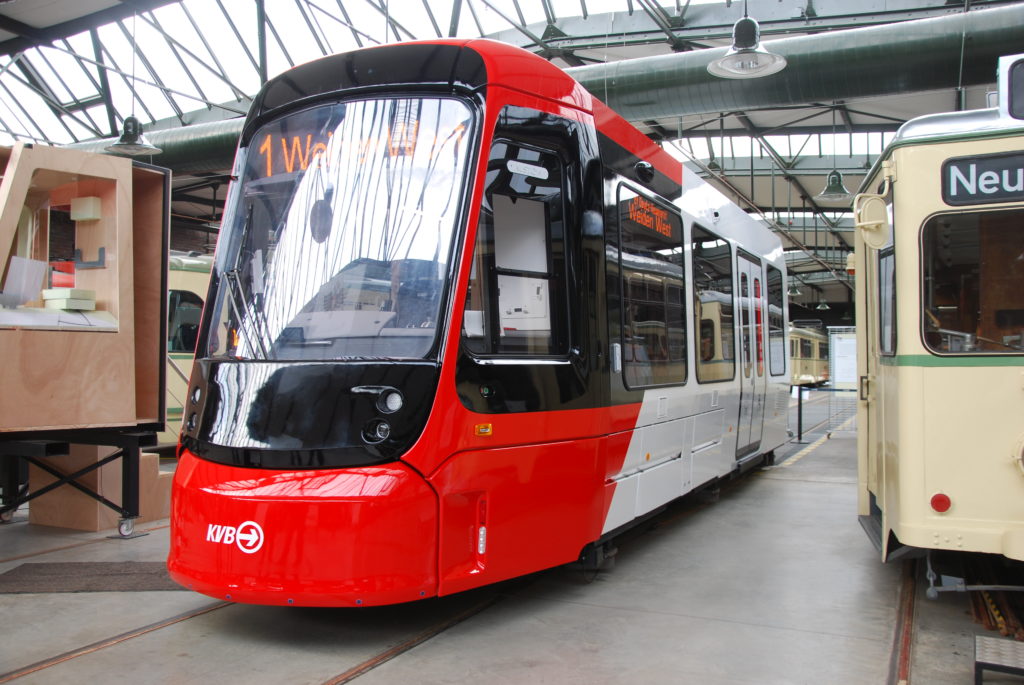
Stefanie Haaks, the chairwoman of the KVB board: “We are in the largest replacement procurement in the history of the KVB in the area of both low-floor and high-floor trams.” 124 trams of the series internally called “K 4.000” are to be replaced by the new trams because they “have already reached the limit of time within which they can still be used in an economically reasonable way.”
We reported on the order for the new trams here:
Up to now, the lines of Cologne’s low-floor network have been served by double traction units consisting of two class 4.000 tram cars coupled to each other. The KVB has 124 of these, each of which is 29.4 metres long (incl. coupling). They are now to be replaced by 62 trams with a length of 60 metres, which will be low-floor in their entire length. In addition, there will initially be two “short” new trams with a length of around 30 metres. There is an option for eleven more long and 25 more short trams, which will be needed when expansion projects in the KVB network are implemented according to the city’s public transport plan.
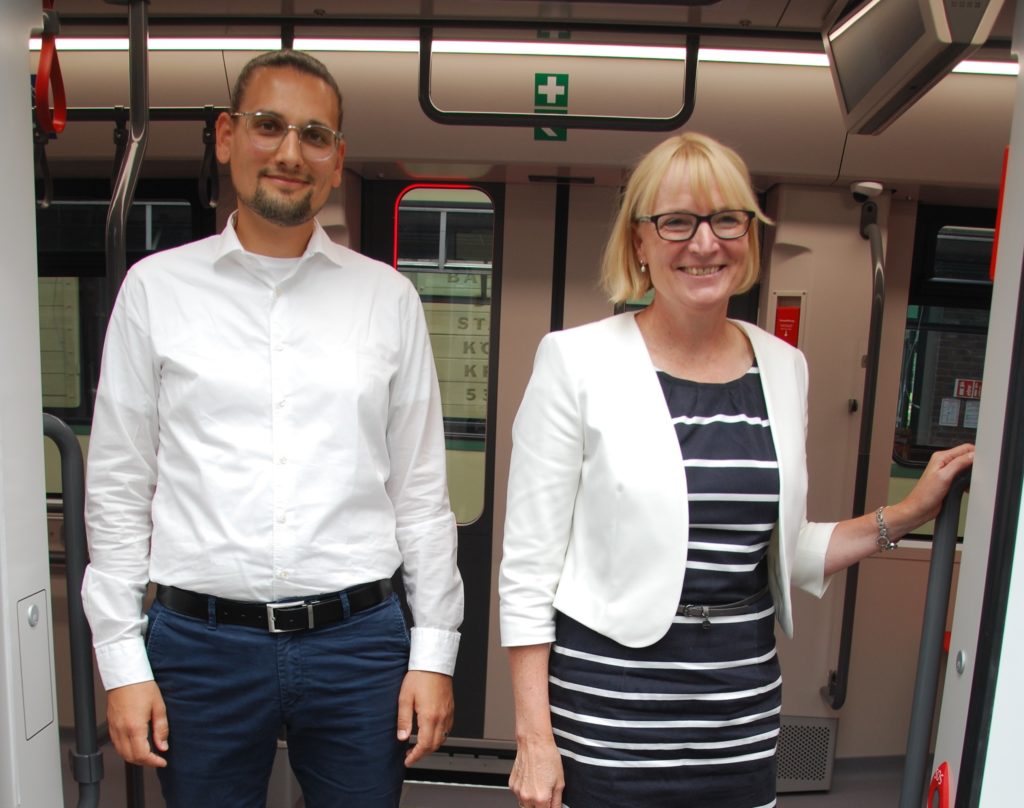
Line 1 (Weiden – Bensberg) in particular is to be converted through platform extensions and other measures so that 90-metre-long trains can be used on it. These will then consist of one long and one short tram of the new generation, which will run in double traction. Once these measures have been completed on Line 1, Line 9 (Sülz – Königsforst) will also be converted for such 90-metre-long trains. “In this way, the capacity on these lines can be increased by up to 50 %. This expansion is urgently needed to accommodate the increasing passenger volume.”
The KVB will receive 80 million euros in subsidies for this project until 2031. The share that KVB will have to bear itself for this procurement is to be raised with shareholder loans from the shareholder City of Cologne.
The Mockup
The mock-up – which shows the tram from the front to the special use area behind the first door – has been painted in the the Cologne city colours red with white. The front section looks much more like a tram than the trams that are now to be replaced. Large destination signs ensure that passengers recognise their tram early on.
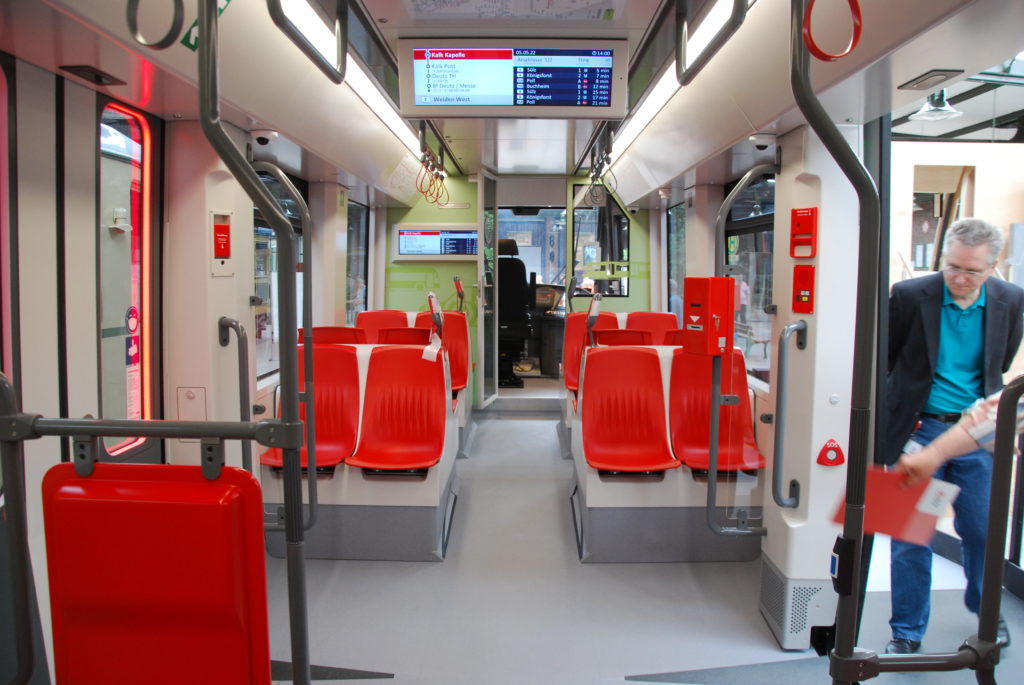
The interior is brightly coloured. Its overall impression is also decisively shaped by a new lighting concept with LED lamps that adapts to the temperature: depending on the temperature, it shines more or less brightly, and it adapts in colour. The plastic bucket seats are a luminous bright red. There may be people who say that plastic seats are uncomfortable. The author cannot confirm this: as long as the plastic shell is ergonomically shaped correctly … The author knows such seats from the Bonn “light rail cars” of the 03 series, and he can only say: the seats are quite okay. And the plastic seats resist bad guys: there is no cutting, and if someone thought they had to leave their scent mark in the form of a graffiti (literally translated from Italian: doodle), the plastic shell seat can be freed from this “work of art” without any problems.
There are folding seats at the special use area that have a somewhat unusual-looking impact surface in the area of the back and head. However, this is intended to protect against rough impacts and injuries.
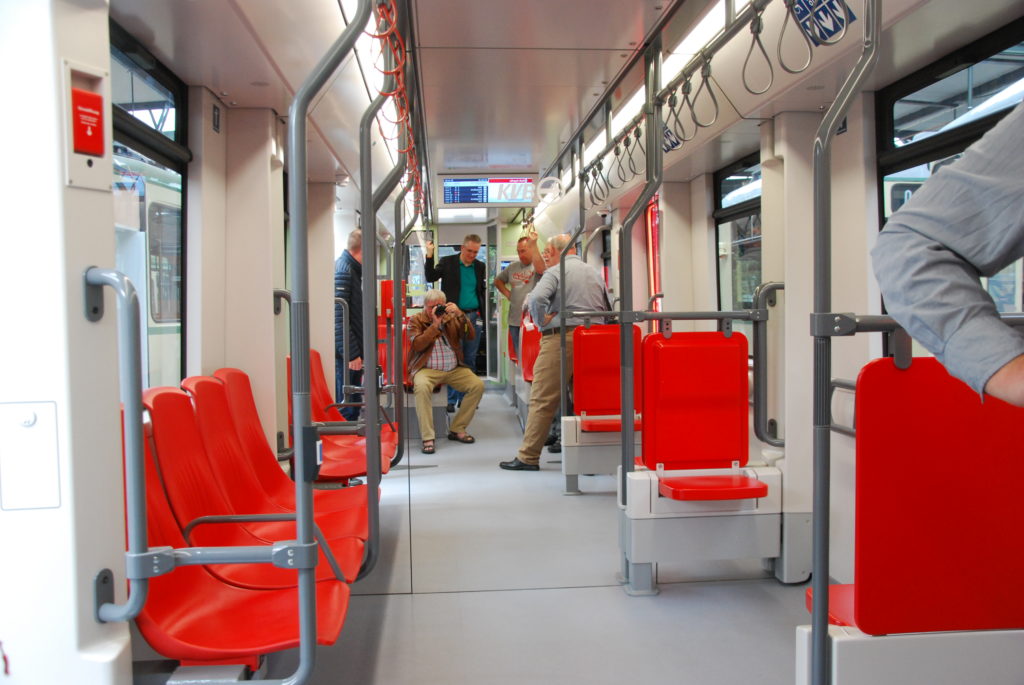
Driving personnel and disabled people are asked
The KVB are proud to ask their drivers and the associations for the disabled what they think of the new trams. All other citizens of Cologne can also view the mock-up on 30 and 31 July in the Thielenbruch tram museum and form their opinion. “This way, we can incorporate any comments or complaints before the construction of the new trams starts.
“Never before,” say KVB, “have we involved riders, disabled people and citizens so intensively in the development of a new vehicle.”
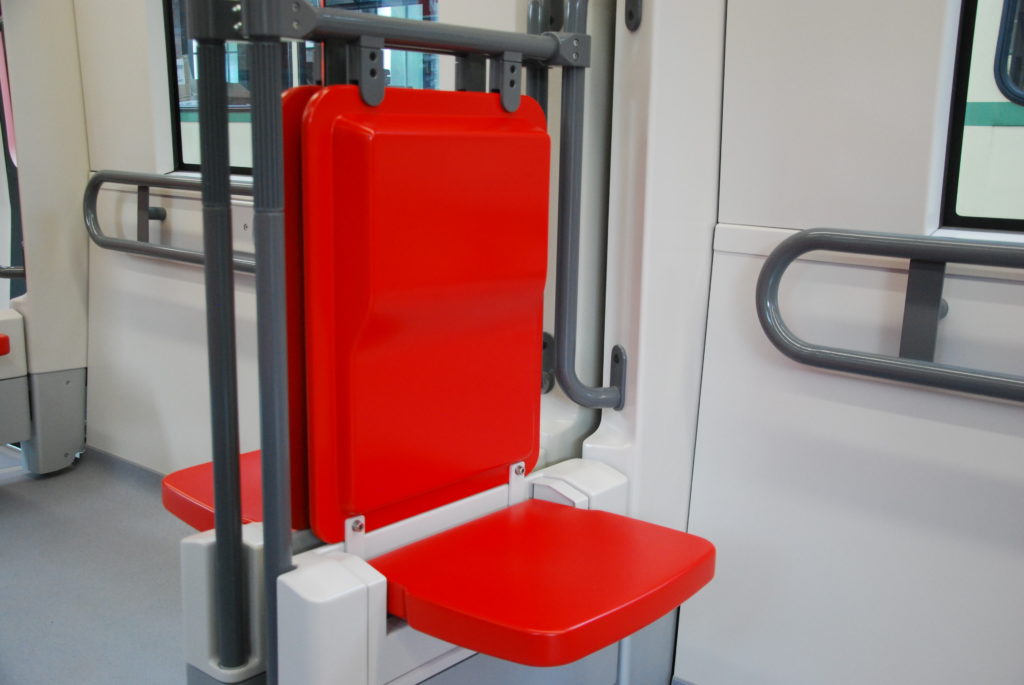
Technology
The new trams in the long version have one more double-width door on each side of the car (instead of eight doors today, they will have nine doors) compared to the double traction consisting of two railcars used today. “This benefits the passenger exchange, the train can continue its journey more quickly.”
What is particularly striking is that the new trains no longer have rear-view mirrors. Instead, they have an element that we have so far only known from lorries or buses: the “mirror eye camera”. Cameras observe the traffic around the train and show their images to the driver on two monitors at his workplace. In trucks and buses, this enlarges the area that the driver can see thanks to the cameras …
The trams can carry more passengers. In the long version, they offer 195 seats.
And we already know this detail from buses and trucks: the on-board electronics monitor the condition of the vehicle and inform the workshop if necessary when a part threatens to break or there is some other problem. This way, the workshop can react before the train breaks down on the track and has to be towed in. And workshop visits no longer take so long.
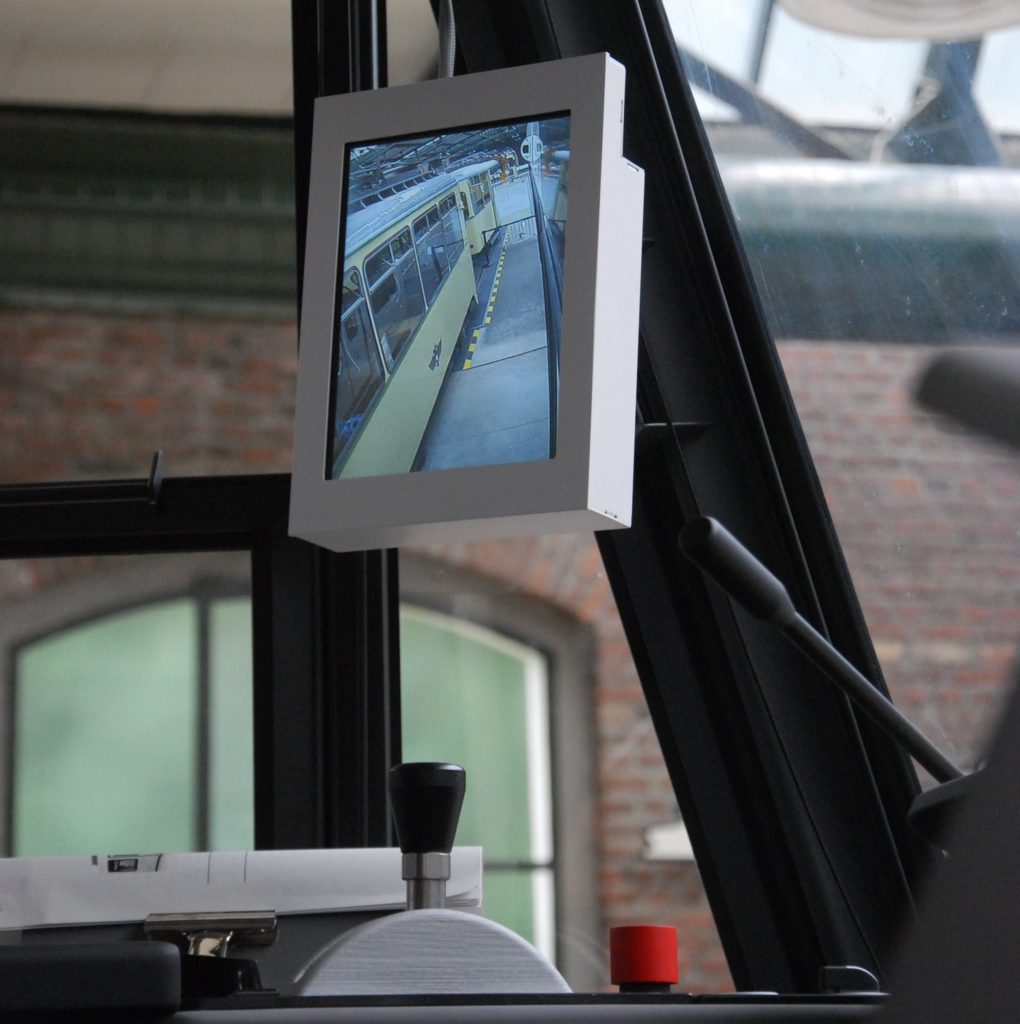
The welded car bodies run on steel bogies, the brake system works hydraulically. We have already mentioned the camera system instead of exterior mirrors. The “collision guard” (collision warning system), well known from buses, is now also being used in railway construction.
Wheel flange lubrication and running surface lubrication by means of a water-based rail head wetting system ensure less noise emissions.
USB charging sockets are basically a matter of course in modern vehicles today, and Cologne’s new trams will also be fitted with them. In addition, the trains will be pre-equipped for passenger WLAN. The monitors for passenger information will be installed in such a way that they can be easily seen from every seat in the train. The air-conditioning system uses a CO2-based coolant and the waste heat from the traction motors is used for heating.
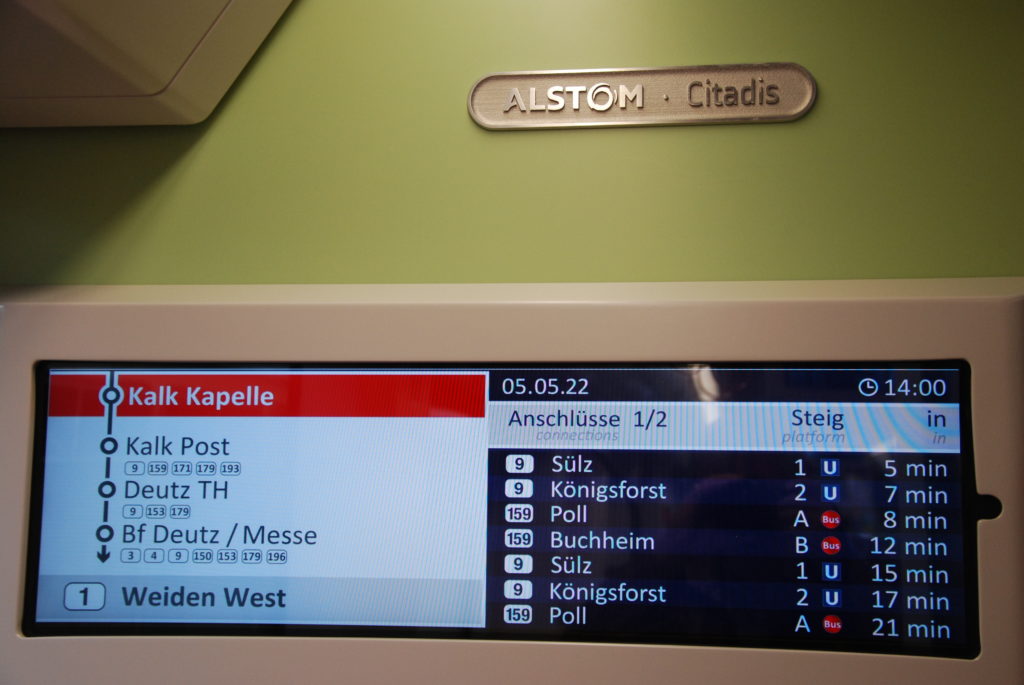
Another detail already known from bus construction: LED bands on the doors in green and red indicate on which side of the coach the doors are opened or remain closed and that the door is closed again.
Conclusion
We can look forward to seeing Cologne’s new Alstom Citadis in action. They are full of good ideas.
28.07.2022
